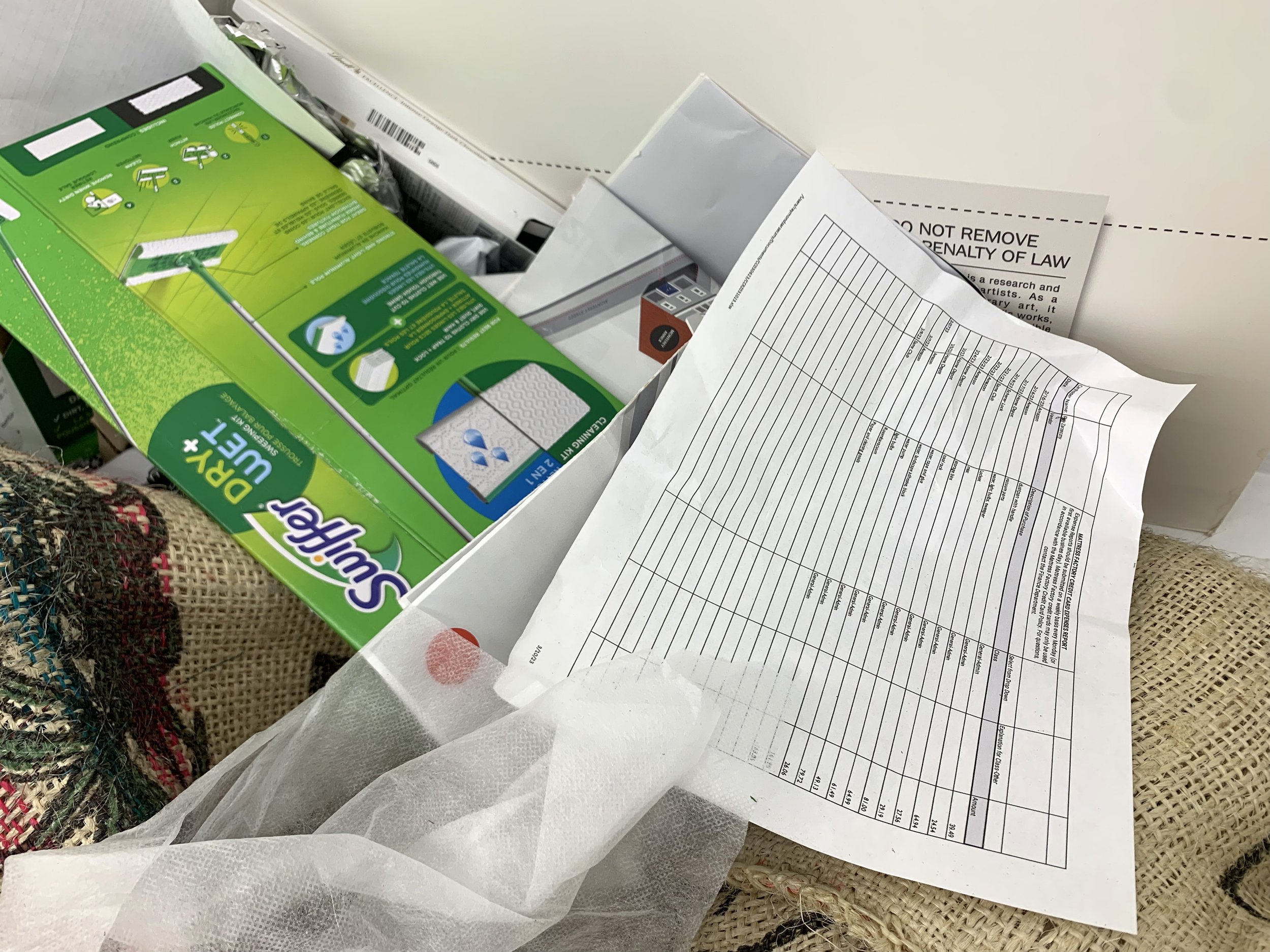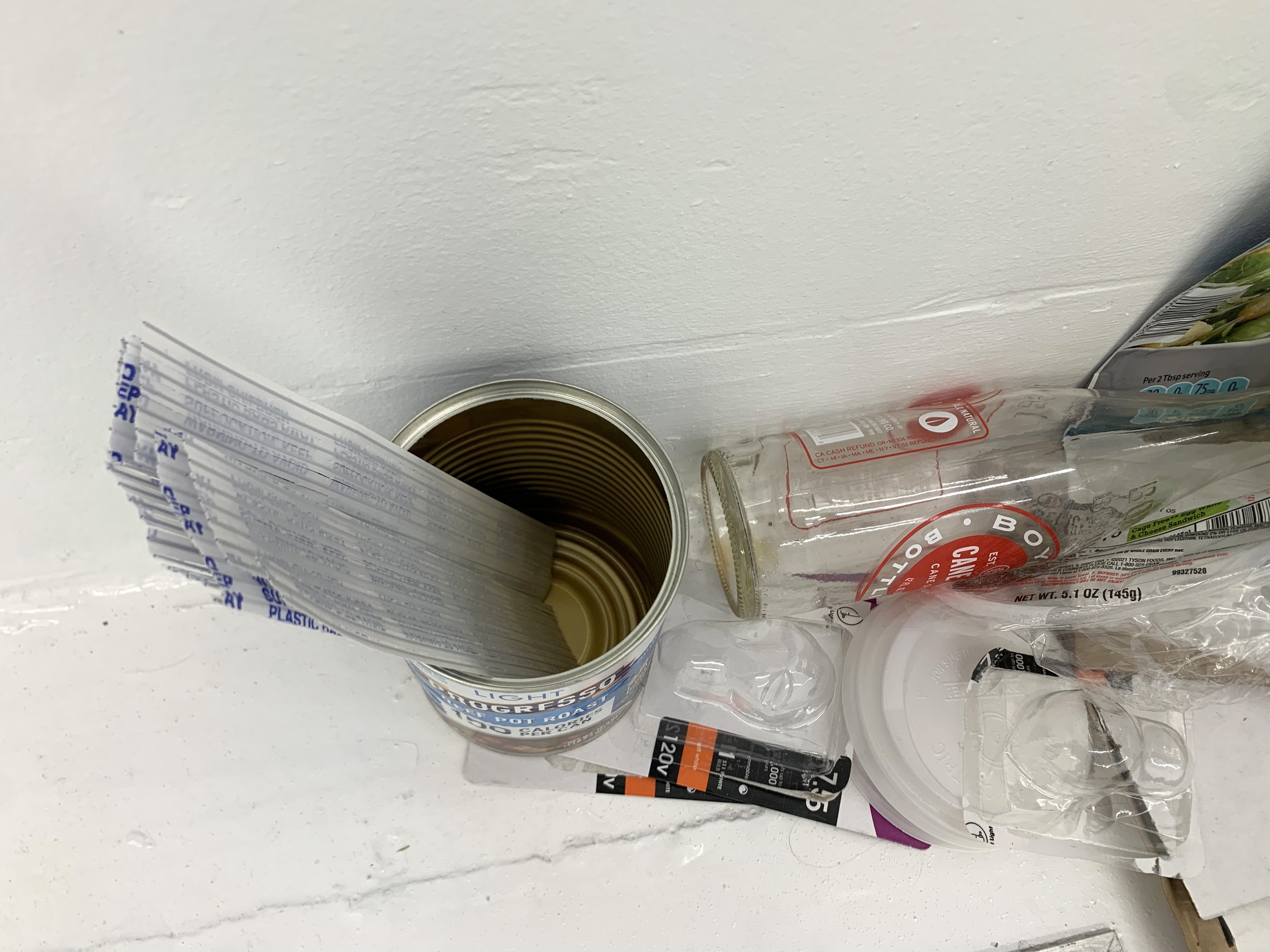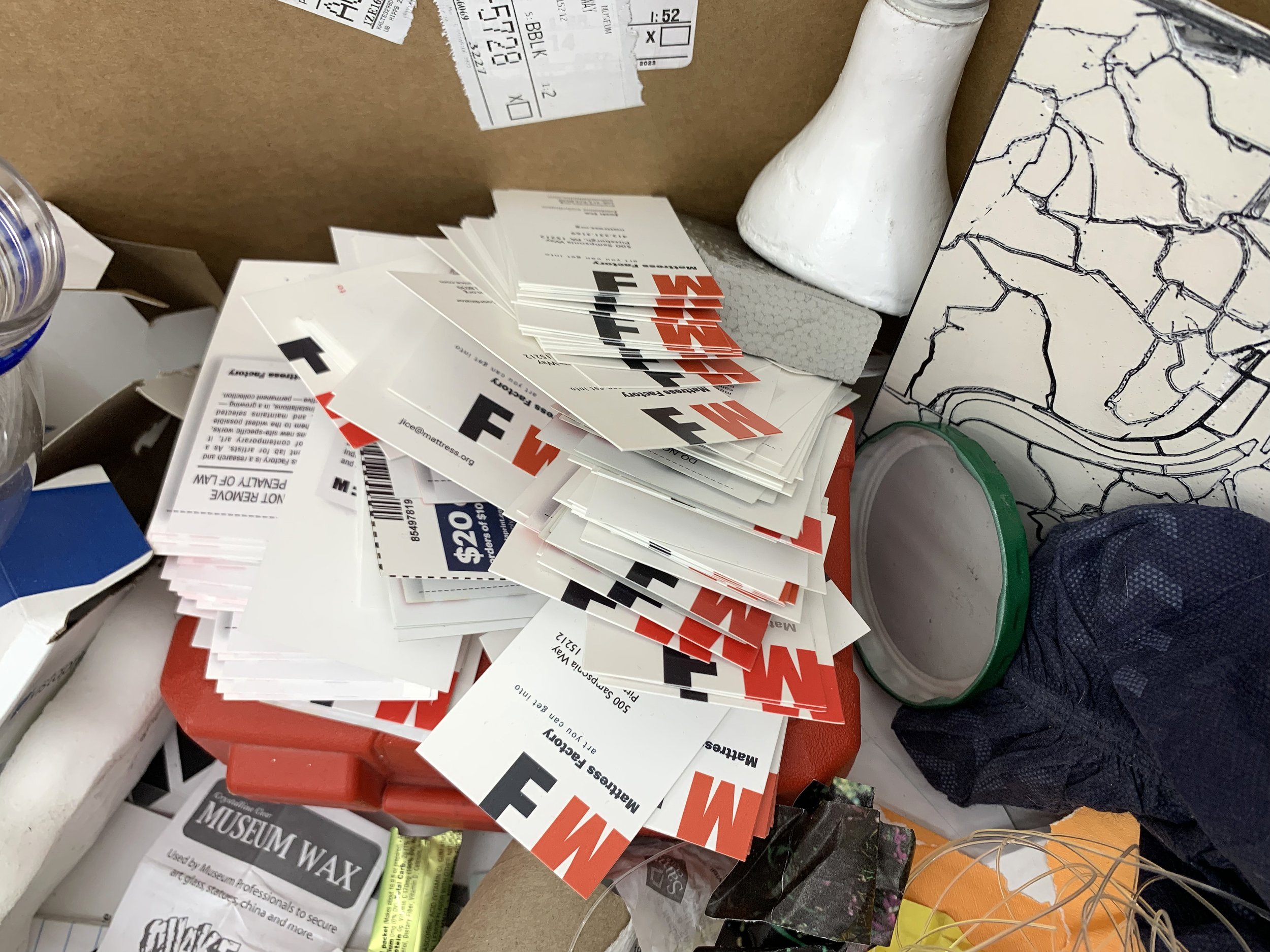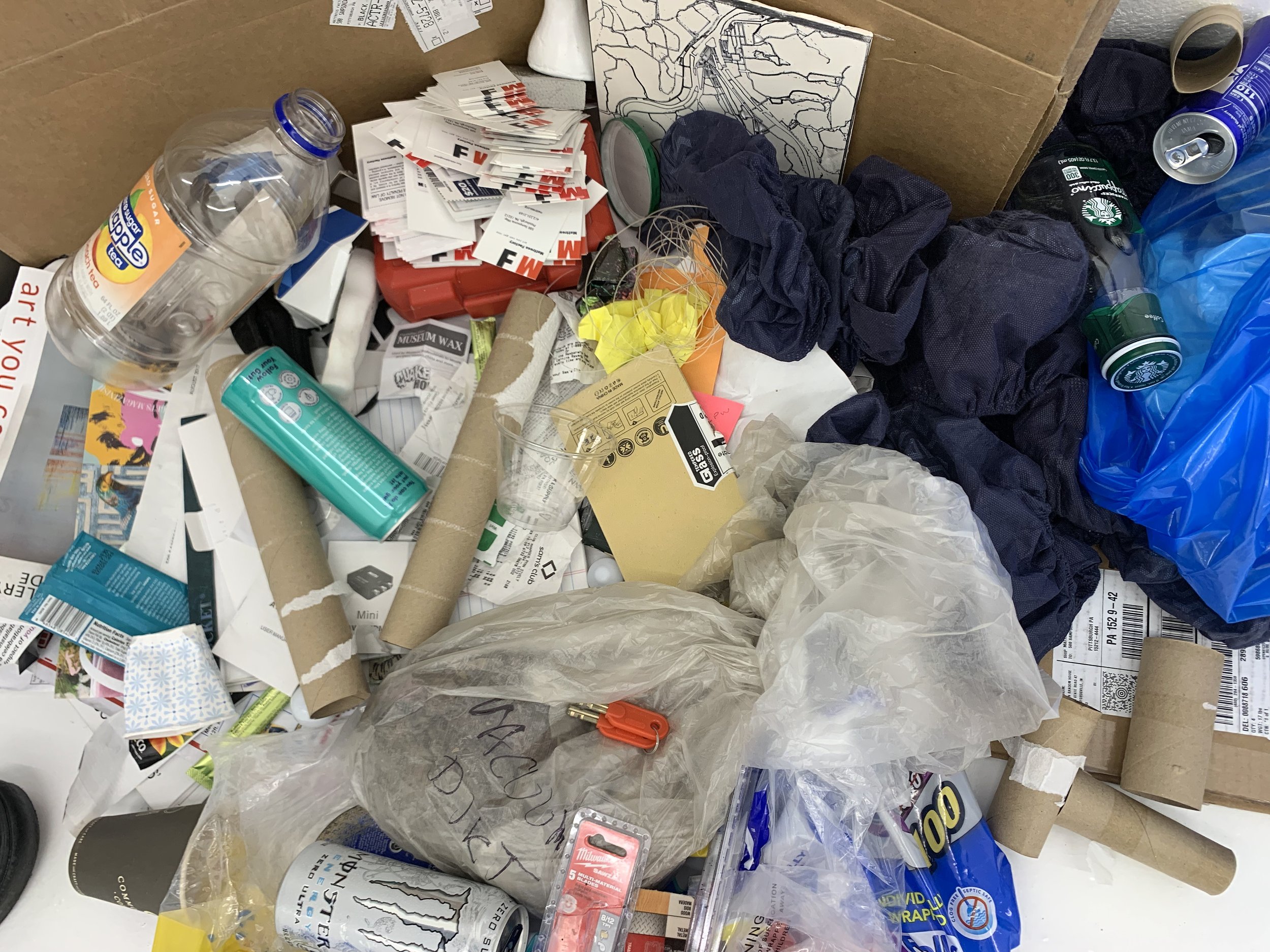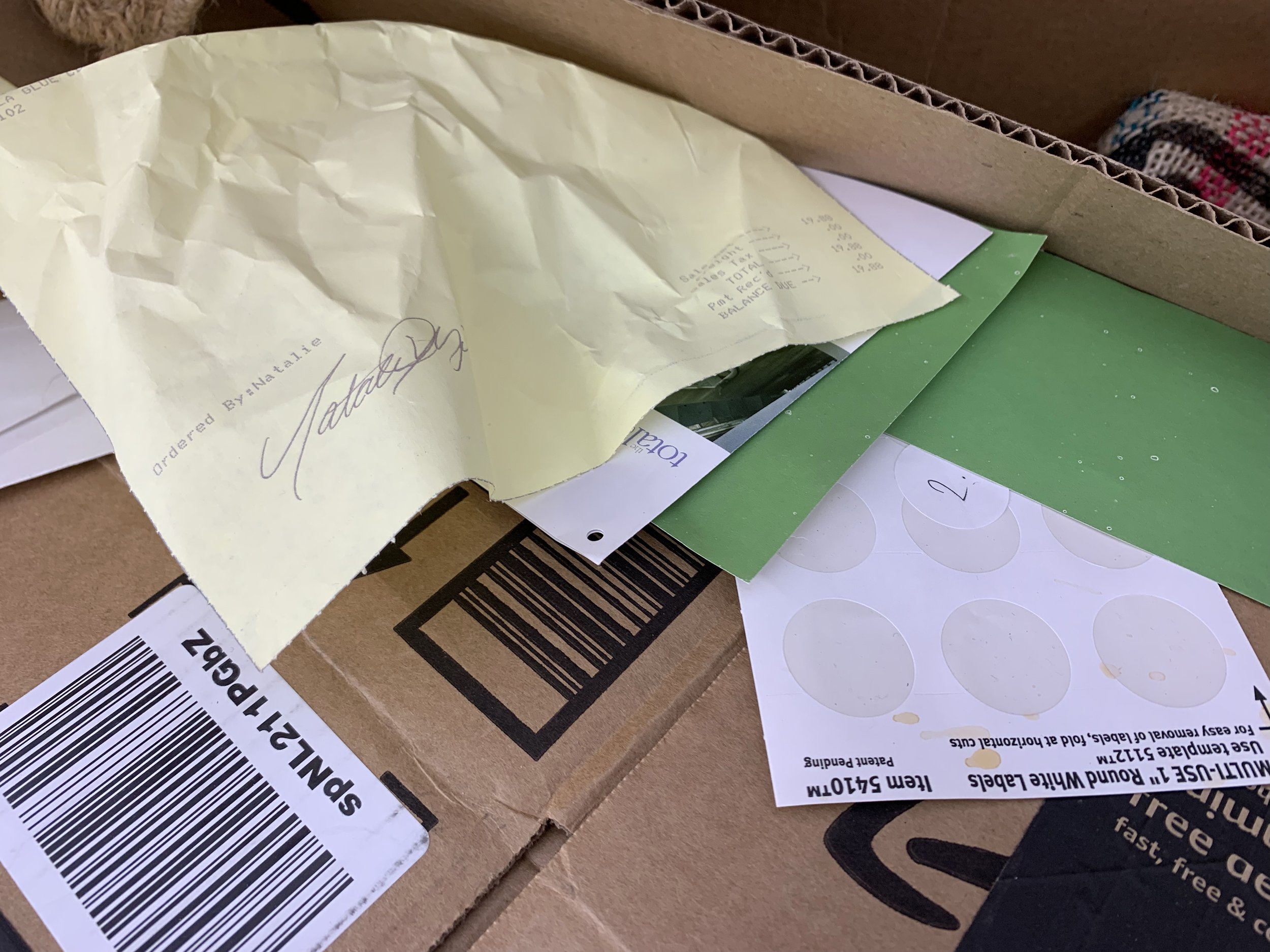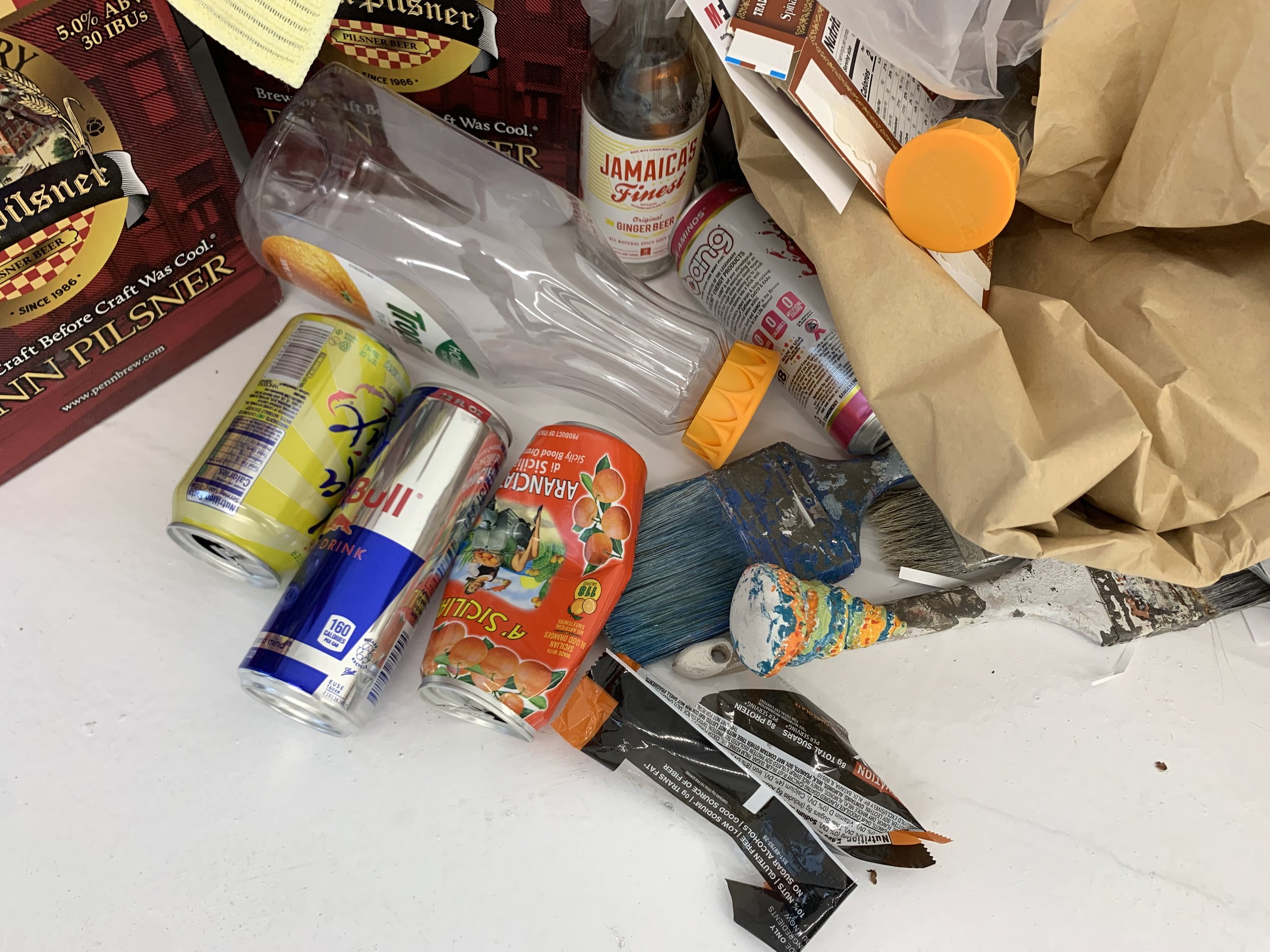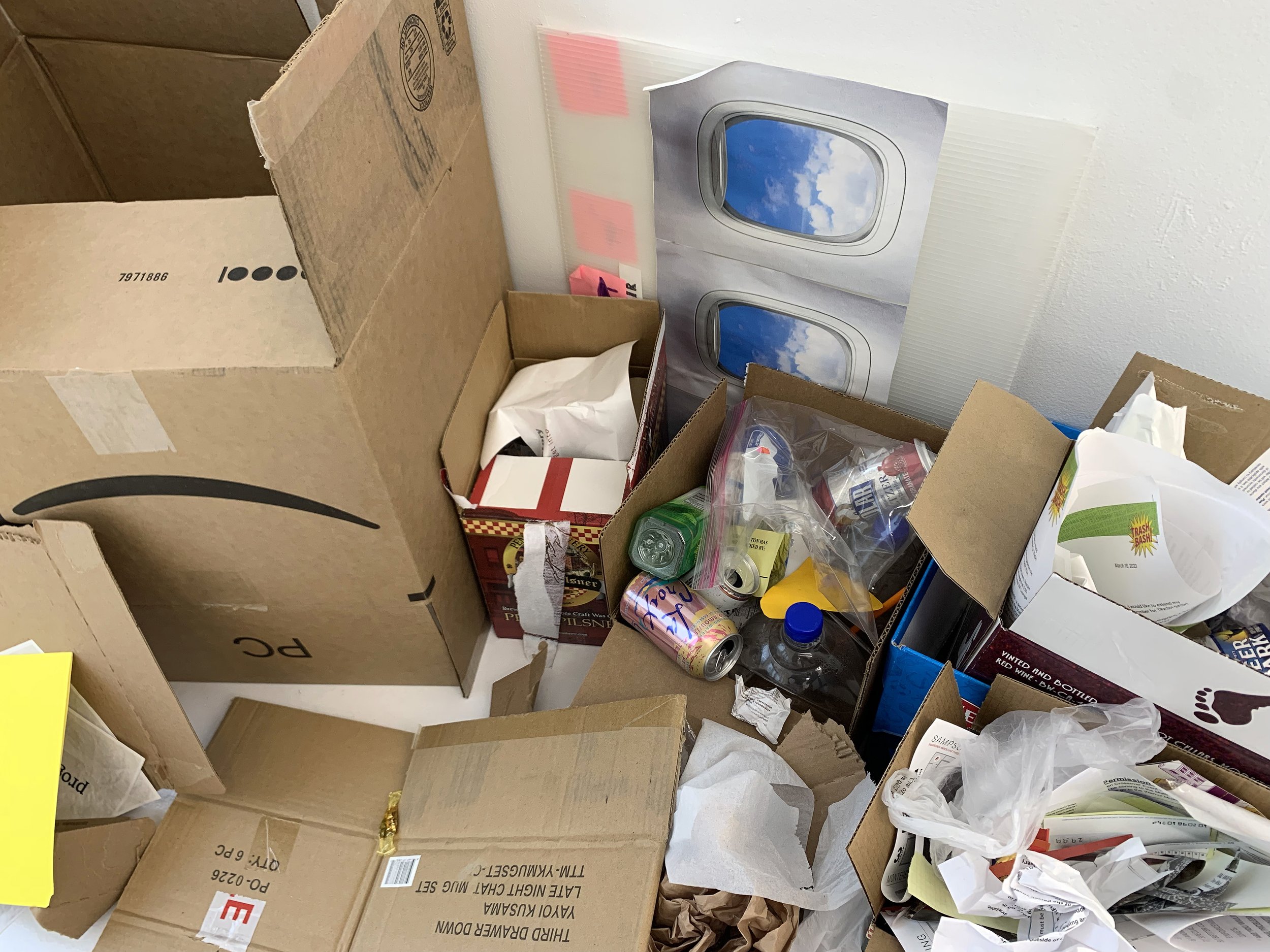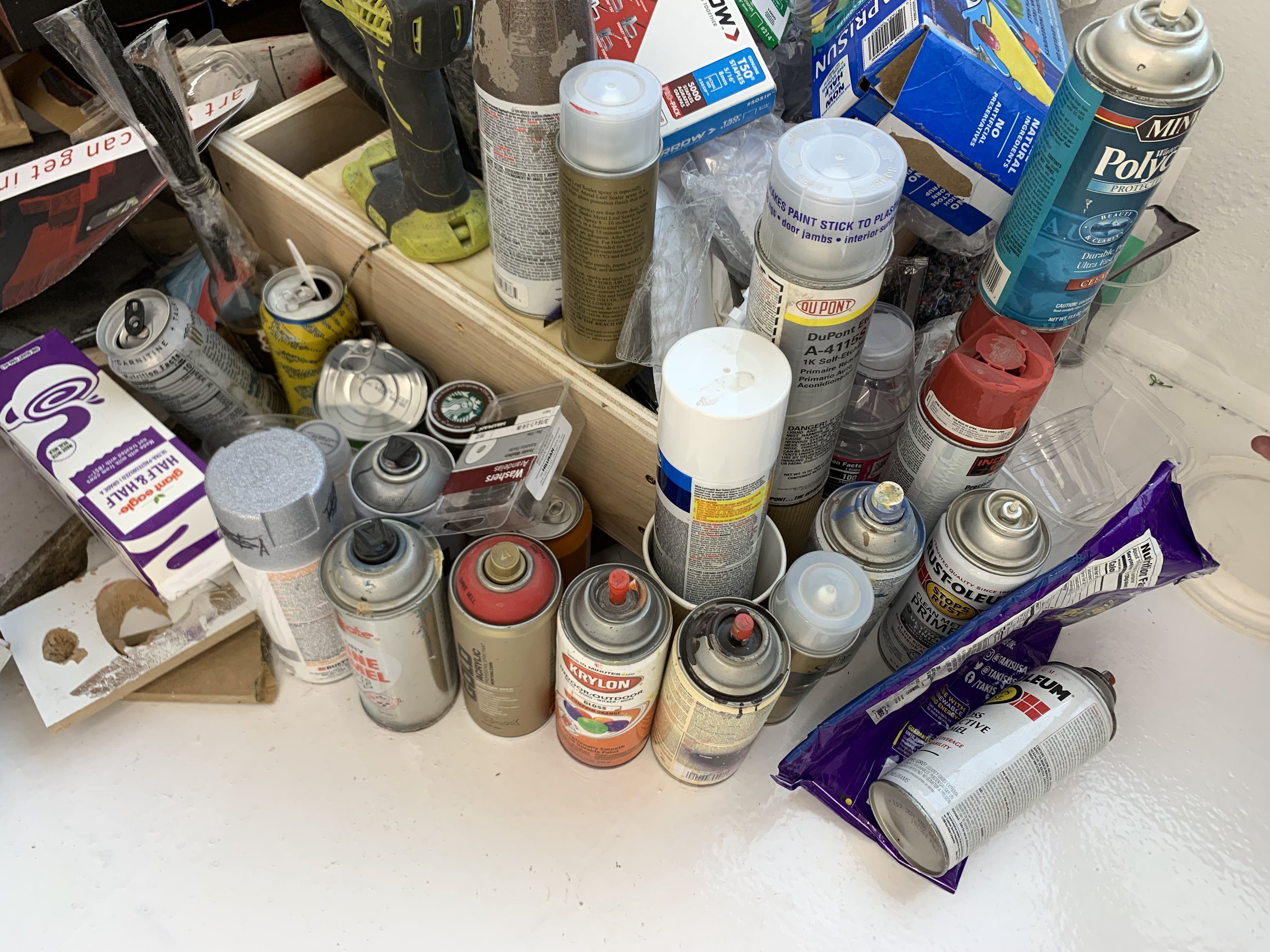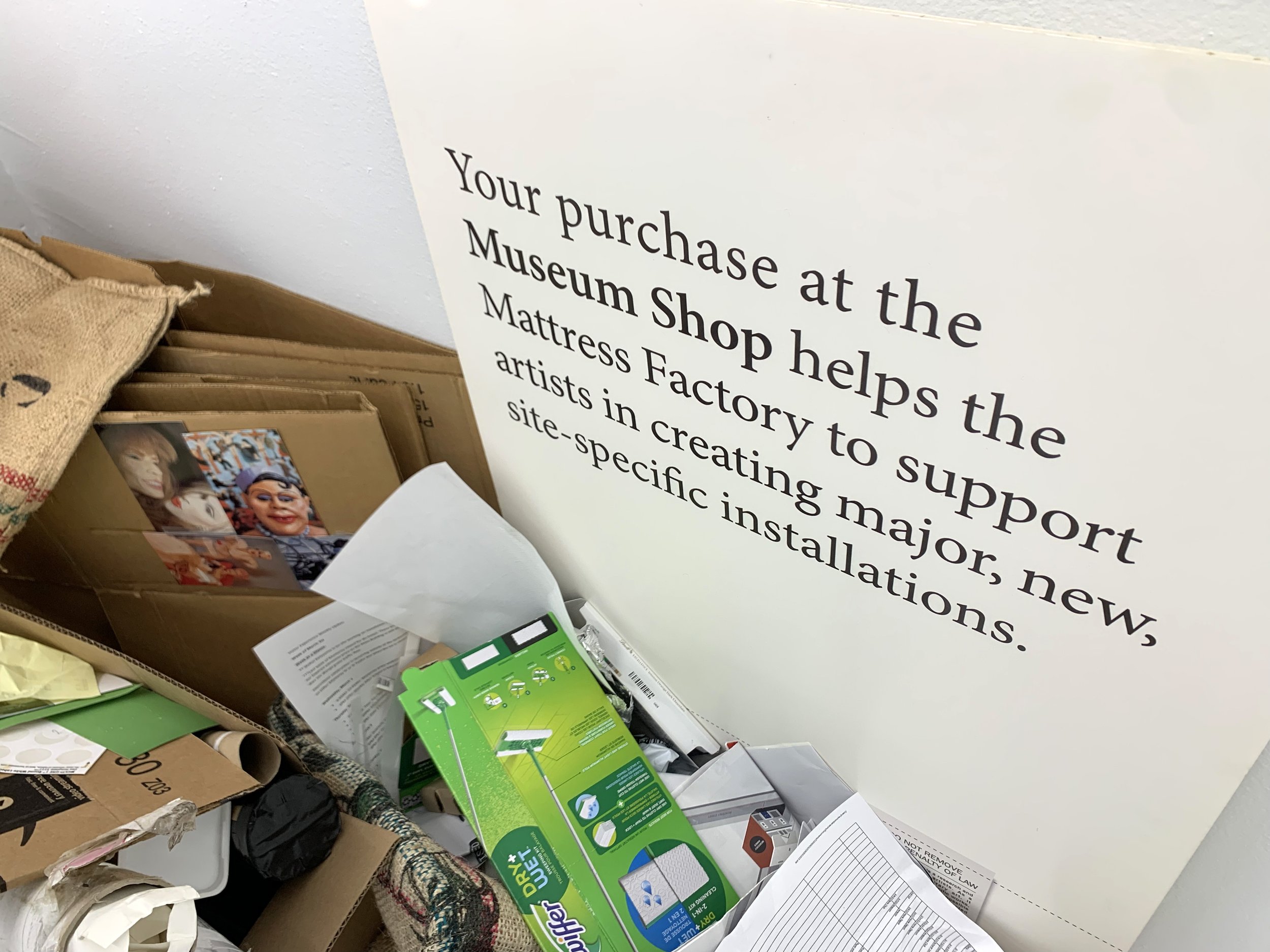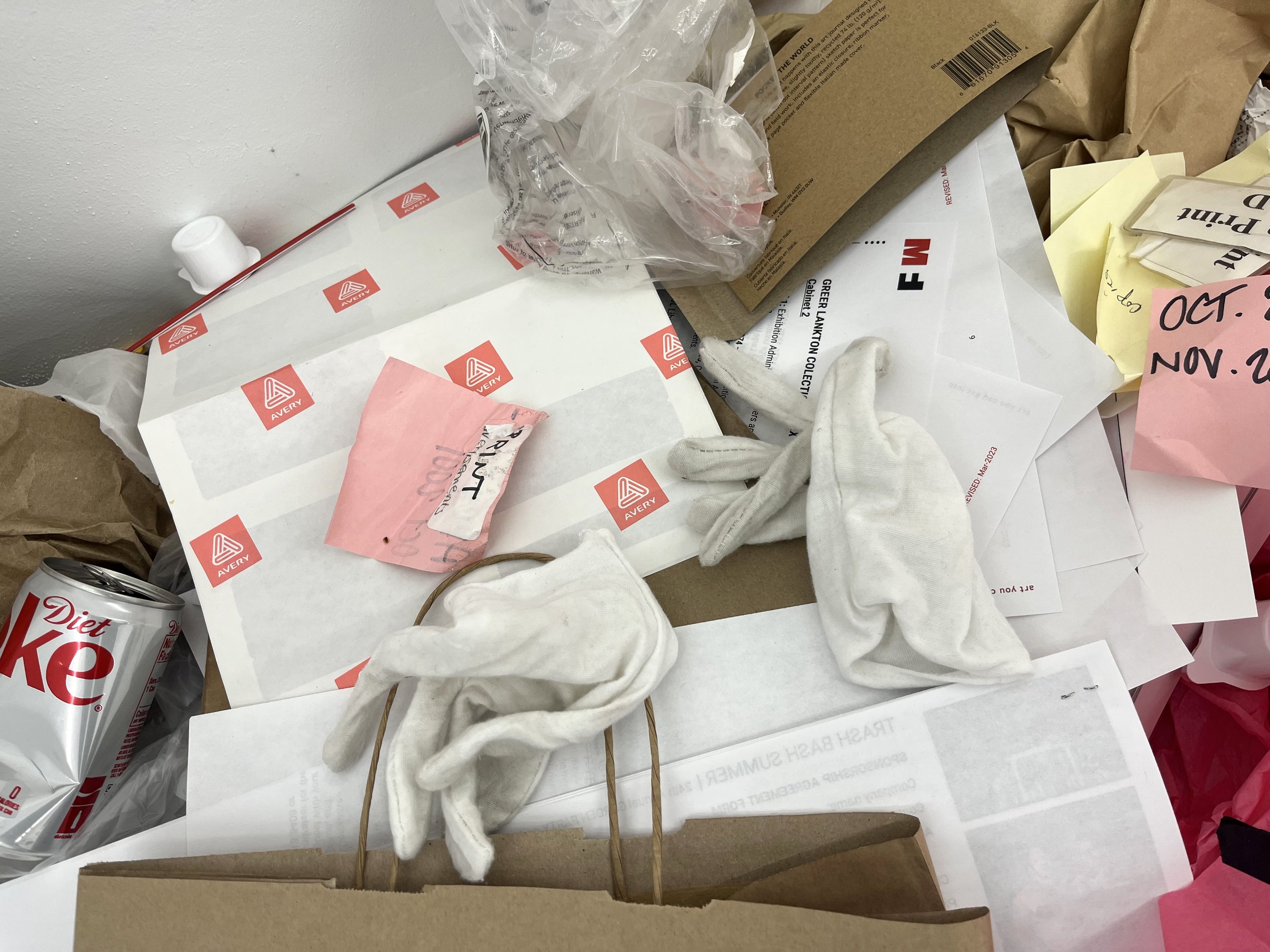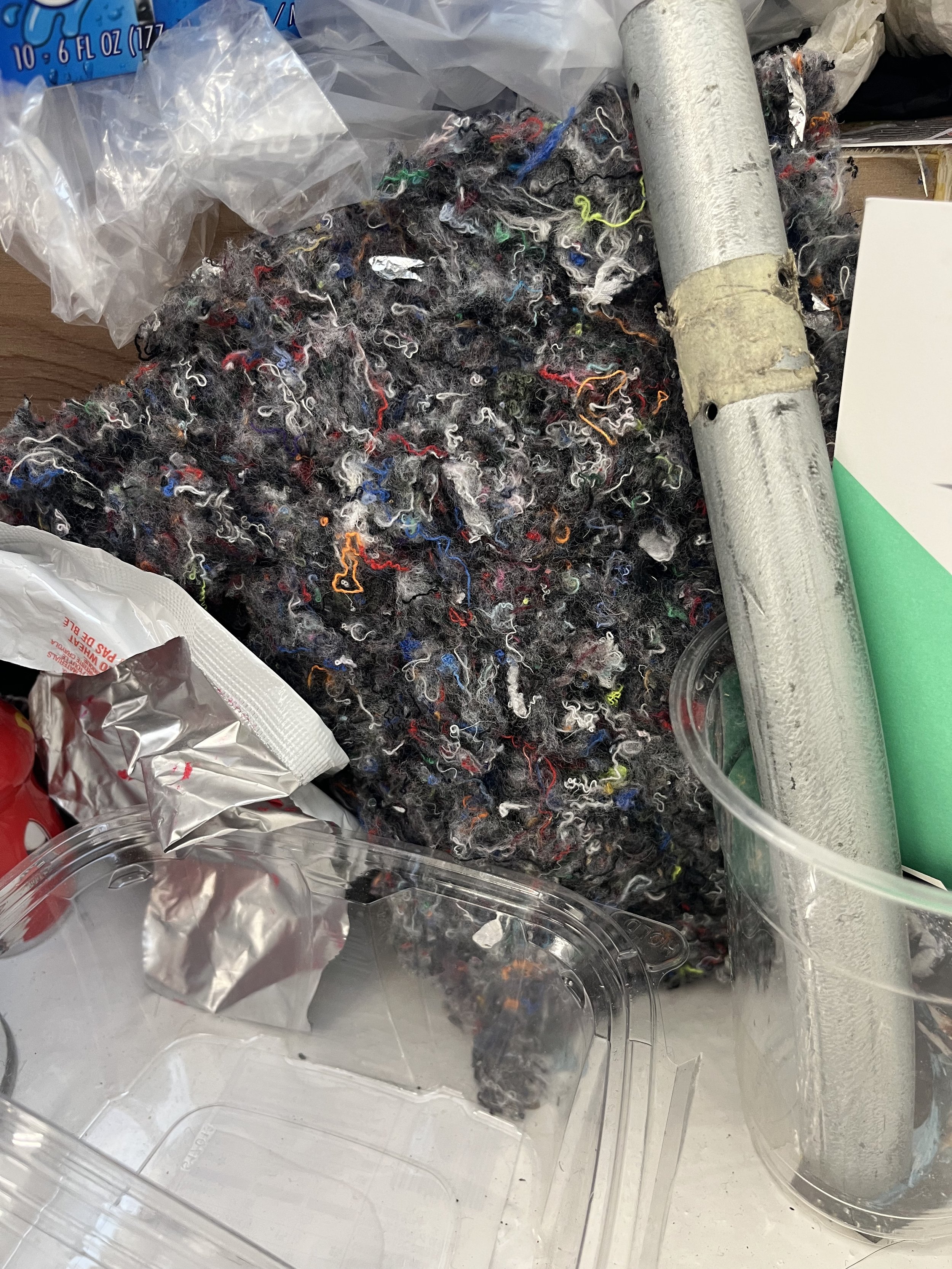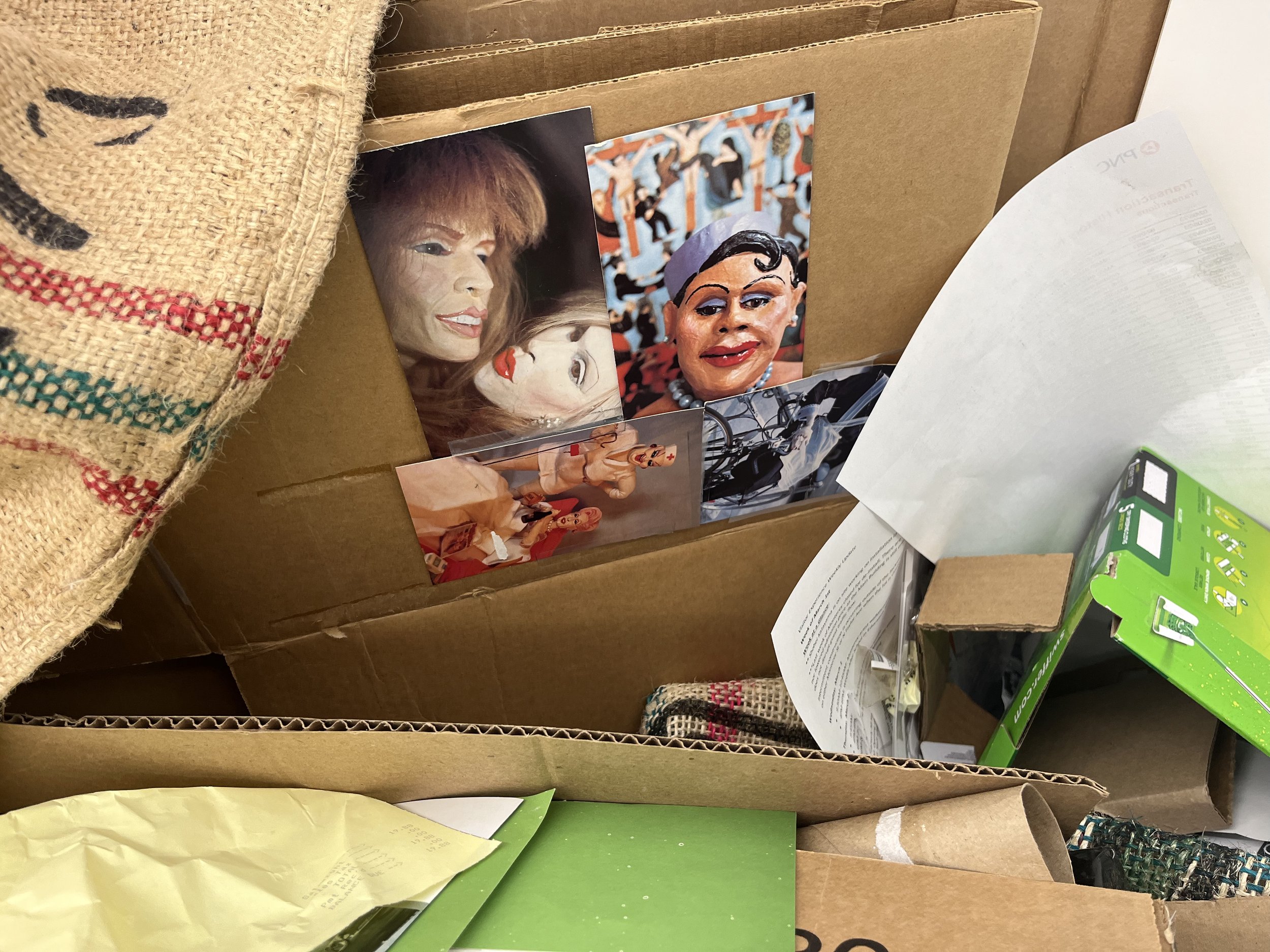The Museum Collects Itself
3rd March - 30th December, 2023 / Mattress Factory Museum / Curated by Denise Markonish / Gallery photos by Tom Little
For the duration of the exhibition, the trash generated by the normal operations of the Mattress Factory Museum will be redirected – stored, catalogued and displayed within the Monterey Annex Gallery – instead of being thrown away. The gallery will begin as an empty white space and will slowly fill up with the discarded materials of all aspects of institutional activities, including production waste from other artists installations, administrative office debris, deinstalled artworks, Kusama booty-covers, Turrell light bulbs, kids workshop debris (glitter), museum visitor detritus, obsolete office technology, staff memos, and other things.
The Museum Collects Itself temporarily imposes a new system onto the Mattress Factory Museum that disrupts its usual behavior in order to bring into sight a flow of matter that has always been there but is only usually visible to one person, Ray Zarzeczny, Facilities Director and the museum’s longest serving staff member. This redirected system creates an accumulating portrait of the institution, a seemingly random and complex collection of the debris of its own varied labors. While the modern study of history is more usually organized along straight chronological lines, this work presents a more organic one, or something more akin to visiting an archeological dig, a junk yard, or a hoarder’s collection. Like a sand timer, this work will build and materially shift over time as single discarded materials become piles, that become drifts of garbage, sculpted by gravity through which museum visitors can walk.
The Mattress Factory is an experimental museum, a renowned producer/presenter of site-specific installation art, and an ideal collaborator for this project. Spending time observing the museum’s behind the scenes administration, as well as the construction process of several installations and de-installations, we imagined a way to give form and attention to the mostly unseen part of the institution. Within this instructional artwork all of the museum staff are participants working in daily shifts to catalogue the contents that become the visible part of our installation as The Museum Collects Itself.
“I want to probe how waste comes to be resonant with significance, where a cigarette end on the street can conjure thoughts of lips and lungs and the precarious employment contracts of road-sweepers, the fabled powers of the PR industry, your schoolyard smoking spot and the late-night pleasures of other events, fantasies, memories, in ways that a yet-to-be smoked cigarette cannot.” -William Viney, philosopher/writer
This page will be updated with images as the work progresses.
“It’s my dream. A world where all would be silent and still and each thing in its last place, under the last dust.”
– Samuel Beckett, Endgame, 1957
Some artists create good problems, they pause and/or break a system in order to interrogate it. Lenka Clayton and Phillip Andrew Lewis are such artists. For example, in 2021, they re-envisioned how cities commemorate their past by creating Historic Site, an 8-foot tall cast bronze plaque installed on the façade of a 120-year old former incline station in Pittsburgh (one already sporting a small plaque). However, rather than highlight one moment or building, Clayton and Lewis go back 600 million years and extend into the deep future, creating a schism in how we understand human and planetary time.
Clayton and Lewis continue this archaeology in, The Museum Collects Itself, which focuses on the perceived antiseptic space of the museum, one seemingly free of dust or garbage. For the 10-months of their exhibition, Clayton and Lewis reveal the white cube's lack of pristine, by diverting the museum’s waste stream to the Monterey Annex first floor. The gallery begins empty, and as trash is accumulated, it is brought into the space. 91 trash and recycling bins are collected daily from the administrative and museum spaces of the Mattress Factory. All but biohazard and food waste will accrete in Clayton and Lewis’s exhibition to be sorted by the entire staff of the museum from the director to the docents, creating what the artists refer to as “an ever-evolving accumulation, forming piles into dunes, dunes into hills, slowly filling the space.”
Investigations into waste have historic precedent in artists such as Mierle Laderman Ukeles and Michael Landy, who like Clayton and Lewis, disrupt systems. Ukeles Manifesto for Maintenance Art, 1969! emphasized the blurred boundaries between art and life, in favor of a public space of care. Ukeles cleaned museum vitrines and scrubbed the floors, making work visible that in both domestic and institutional realms typically remain private. Then, in 1979, Touch Sanitation, documented her time with the New York Department of Sanitation, where she met over 8,500 employees, shook their hands and thanked them for their work. Landy, on the other hand, turned his lens to his own material accumulation. For Break Down, 2001, he compiled an inventory of his belongings - 7,227 items - which he and a team sorted, disassembled, and prepared for the landfill. A self-portrait through possessions.
Clayton and Lewis contemporize this history, especially as concerns about carbon footprints are urgent. By collecting 10-months of trash they make cultural waste evident, while aestheticizing the discarded in an installation – sorting, baling, and piling into the gallery, as visitors traverse the material via diminishing pathways. This conjures Man Ray and Marcel Duchamp, Dust Breeding (1920), in which the dust gathered on Duchamp’s “Large Glass” was photographed by Man Ray in a bird’s eye view. It is accumulation made visible, a nod to the Readymade, and an imaginary map of a forgotten city. After dust breeds and garbage piles up, Clayton and Lewis’s gallery ends as it started: empty. Perhaps we will be left with a deeper understanding of what happens behind the scenes or will imagine hovering above the installation to see the topography of the Mattress Factory’s waste, a place “under the last dust.”
Exhibition text by Denise Markonish, Curator














